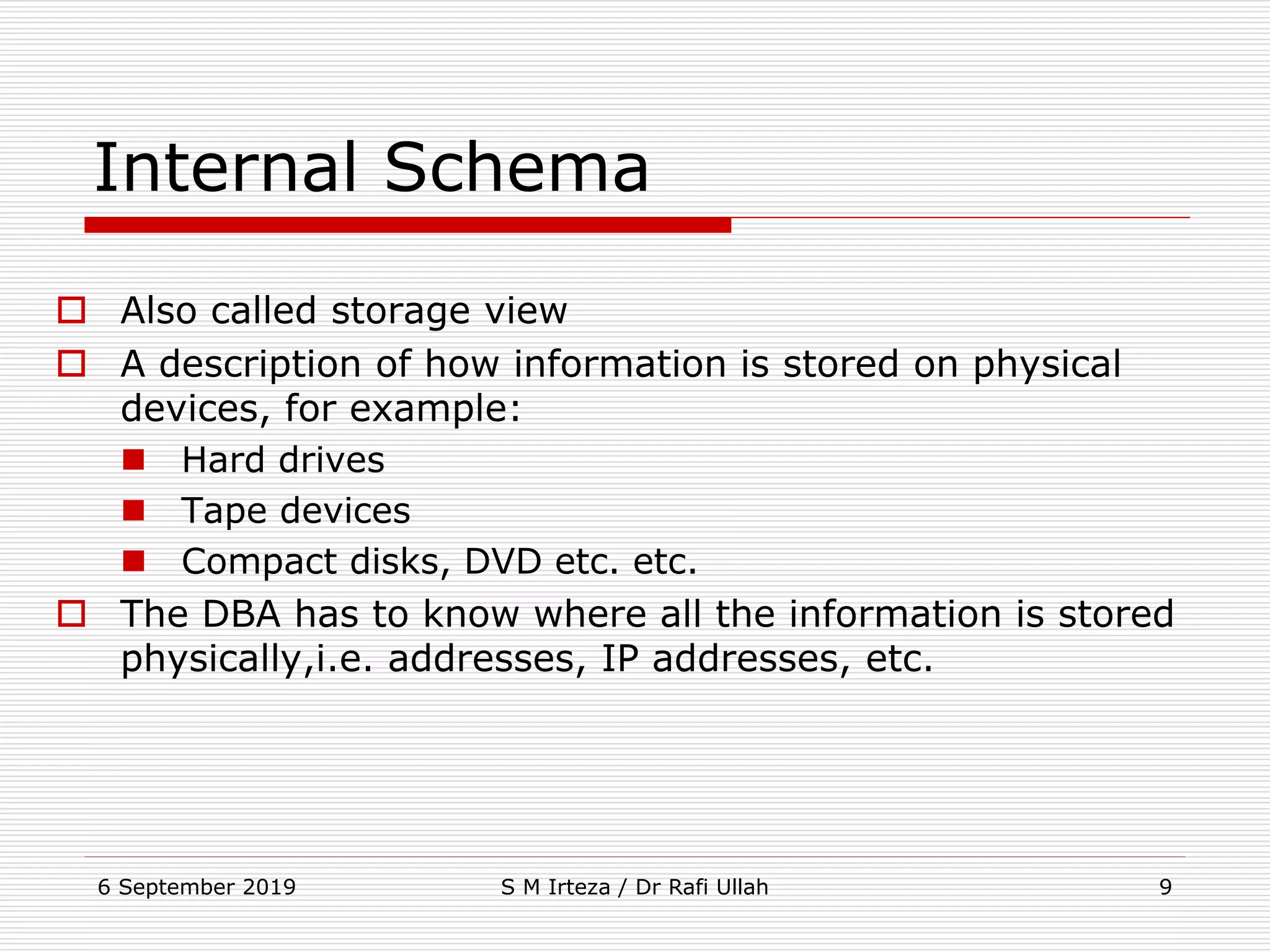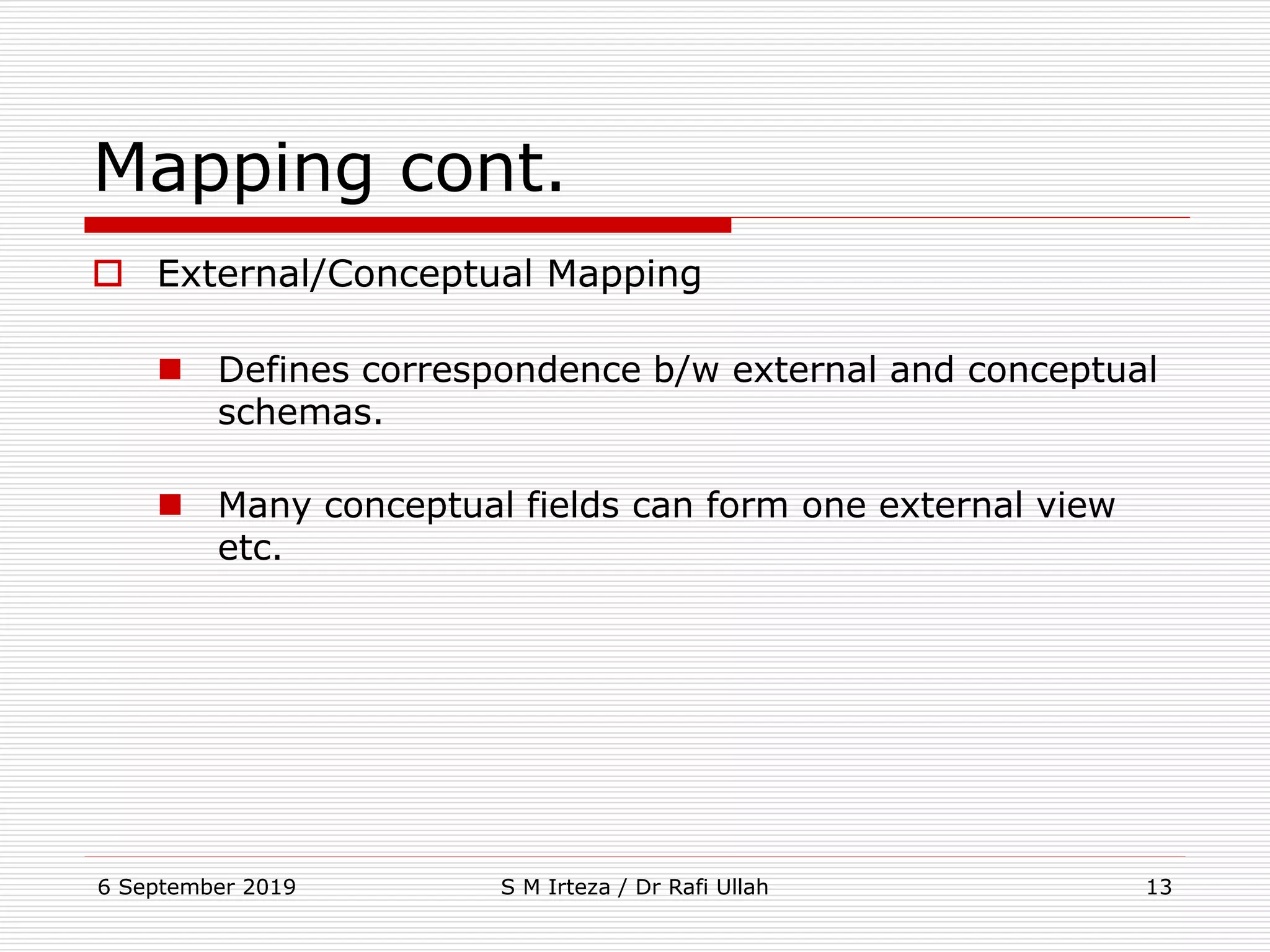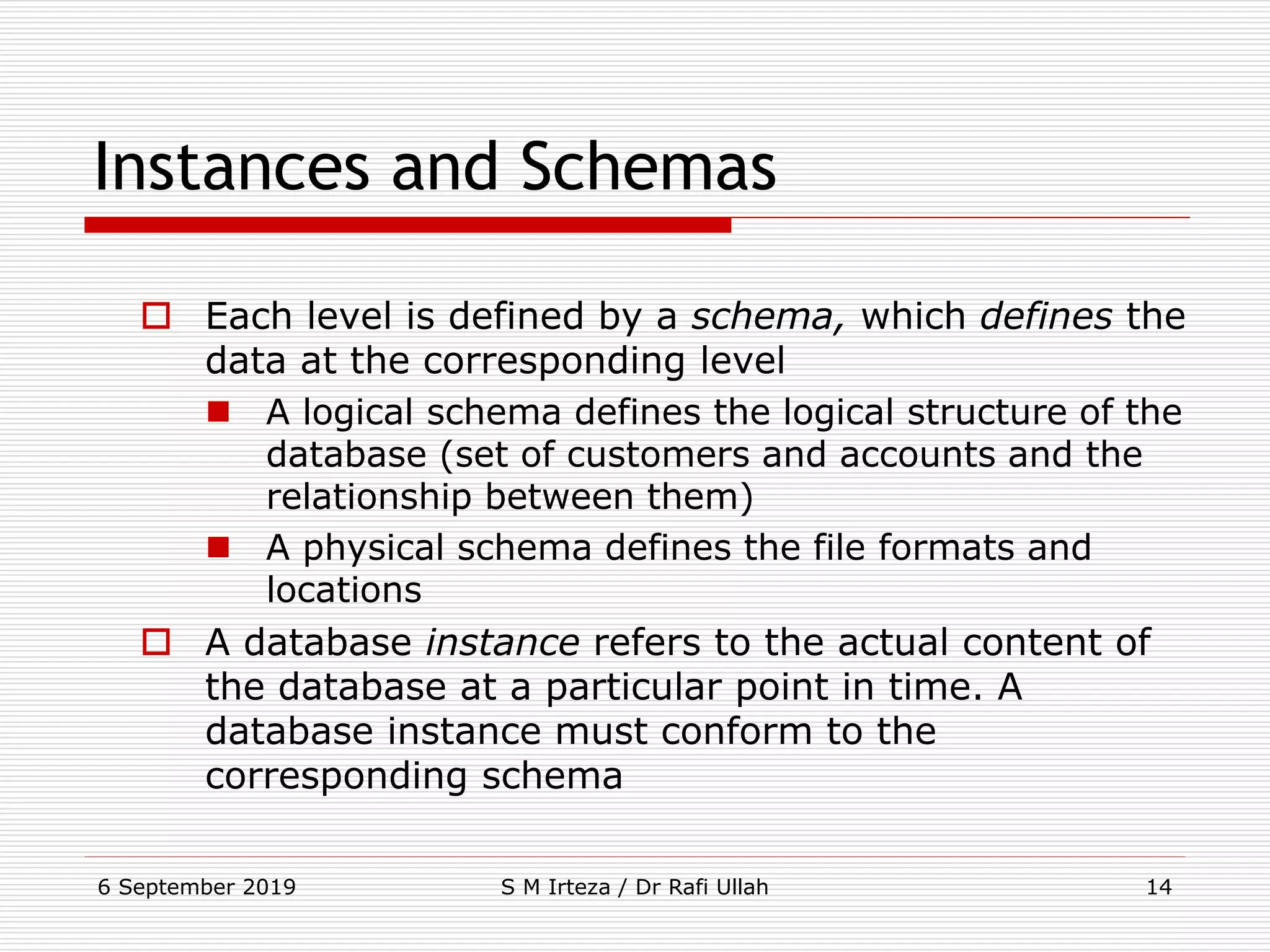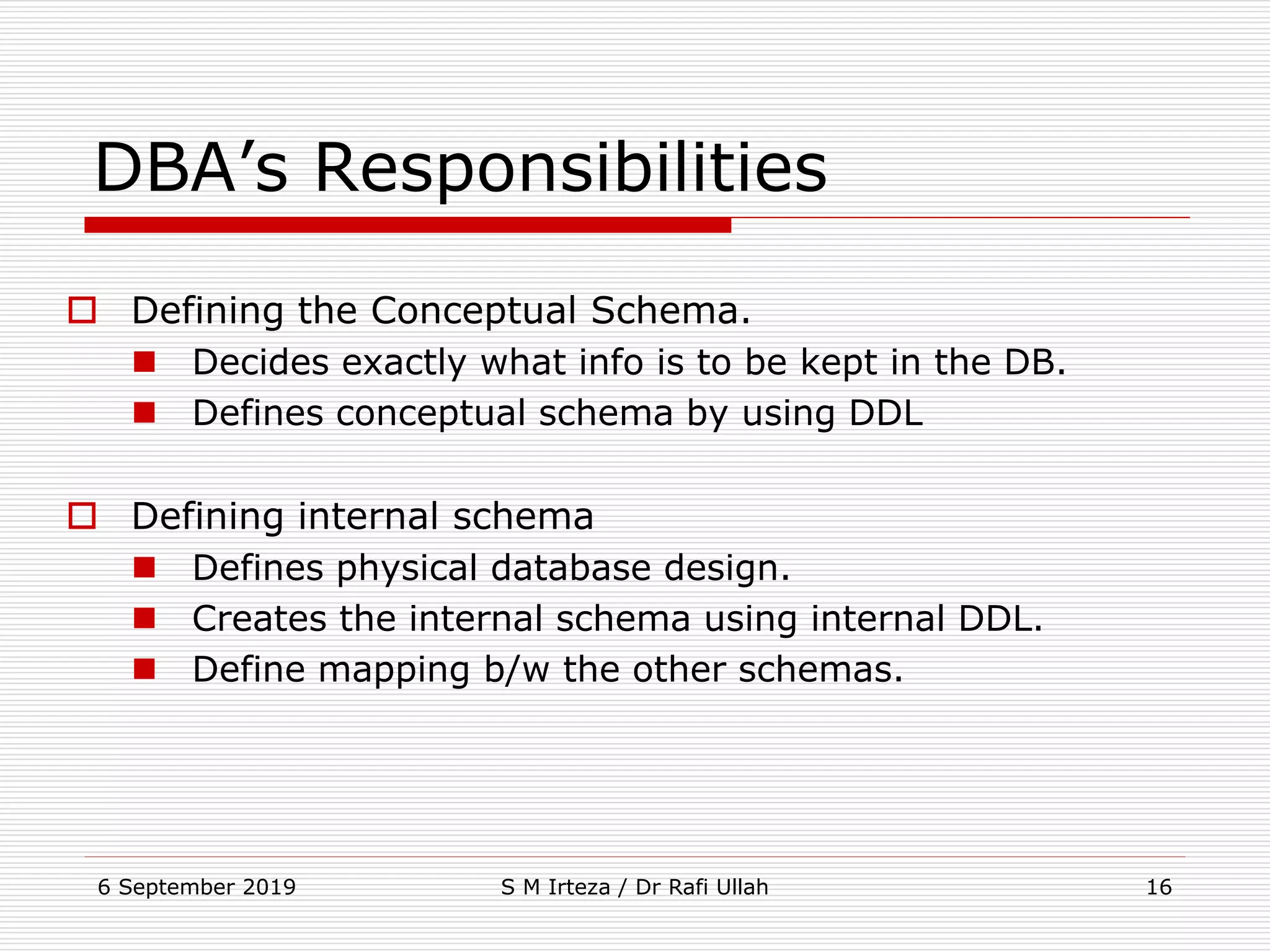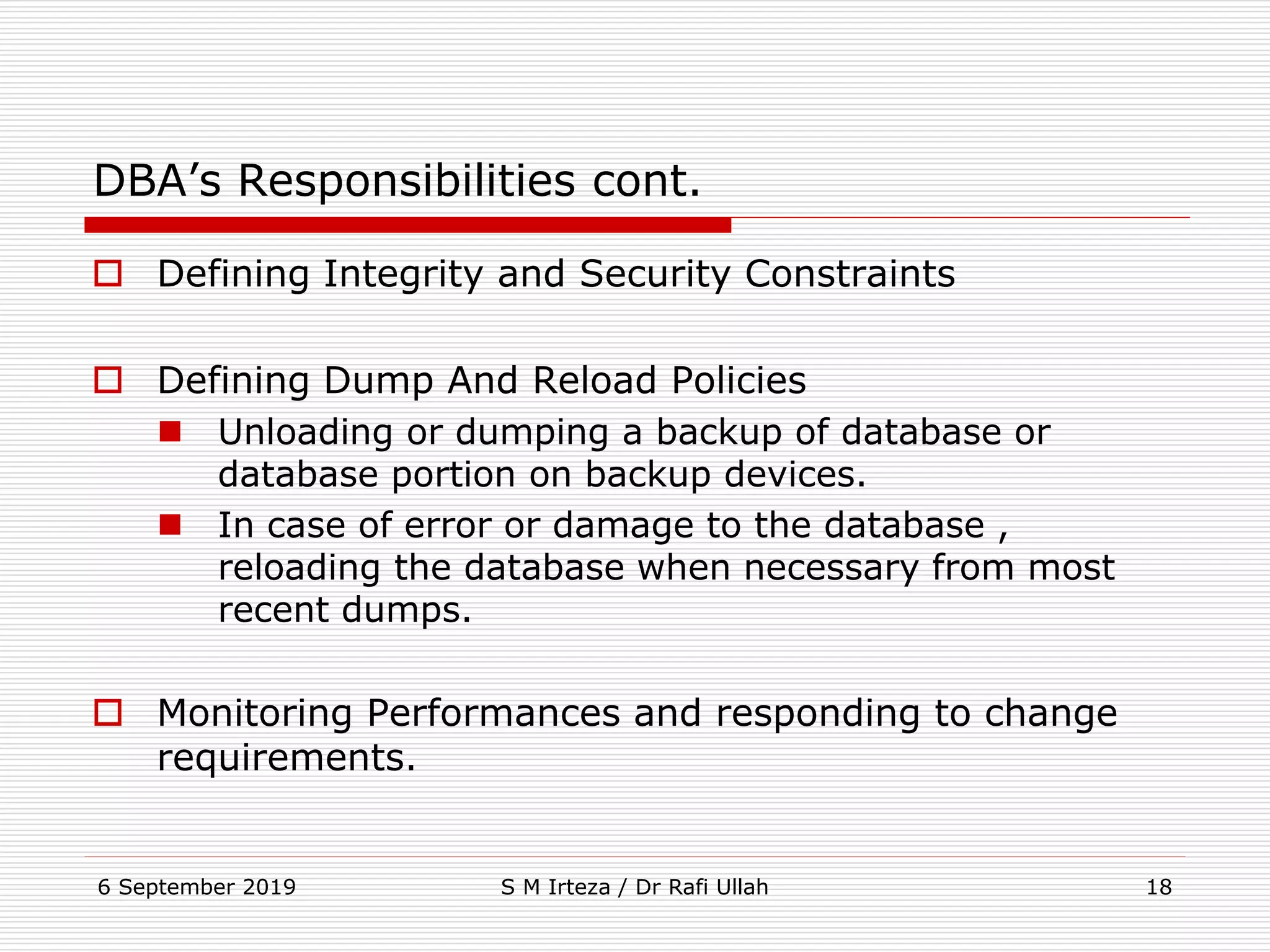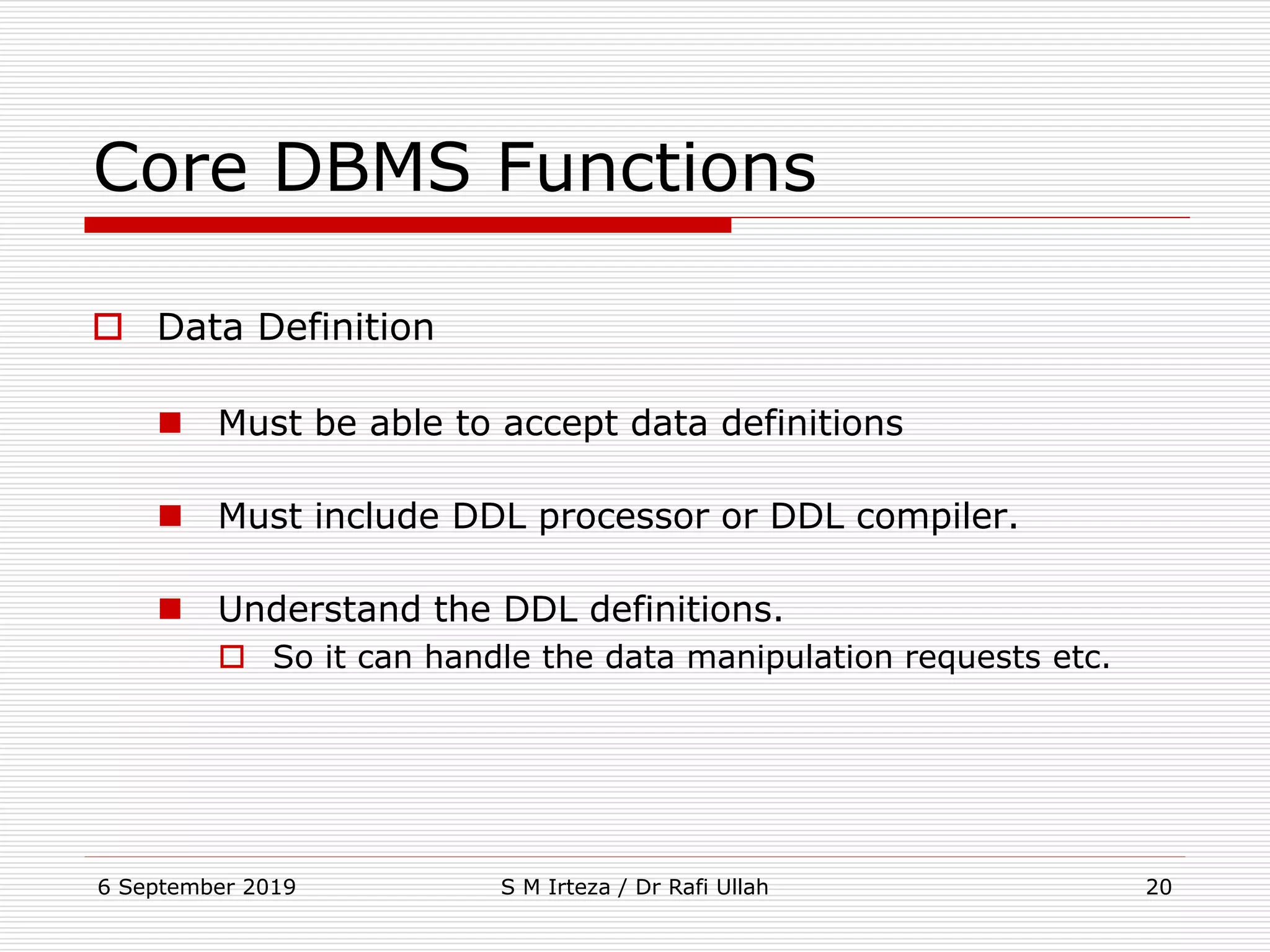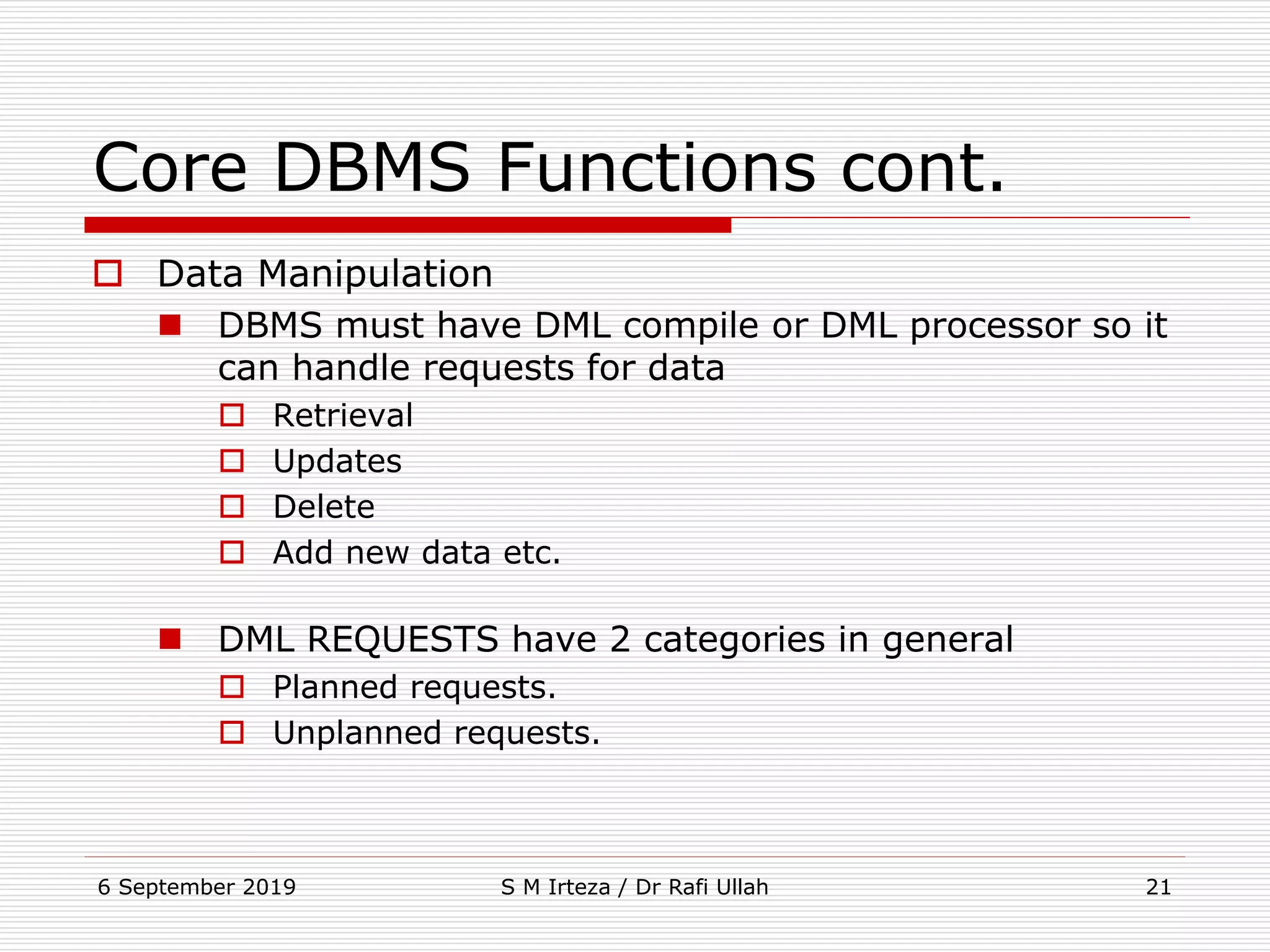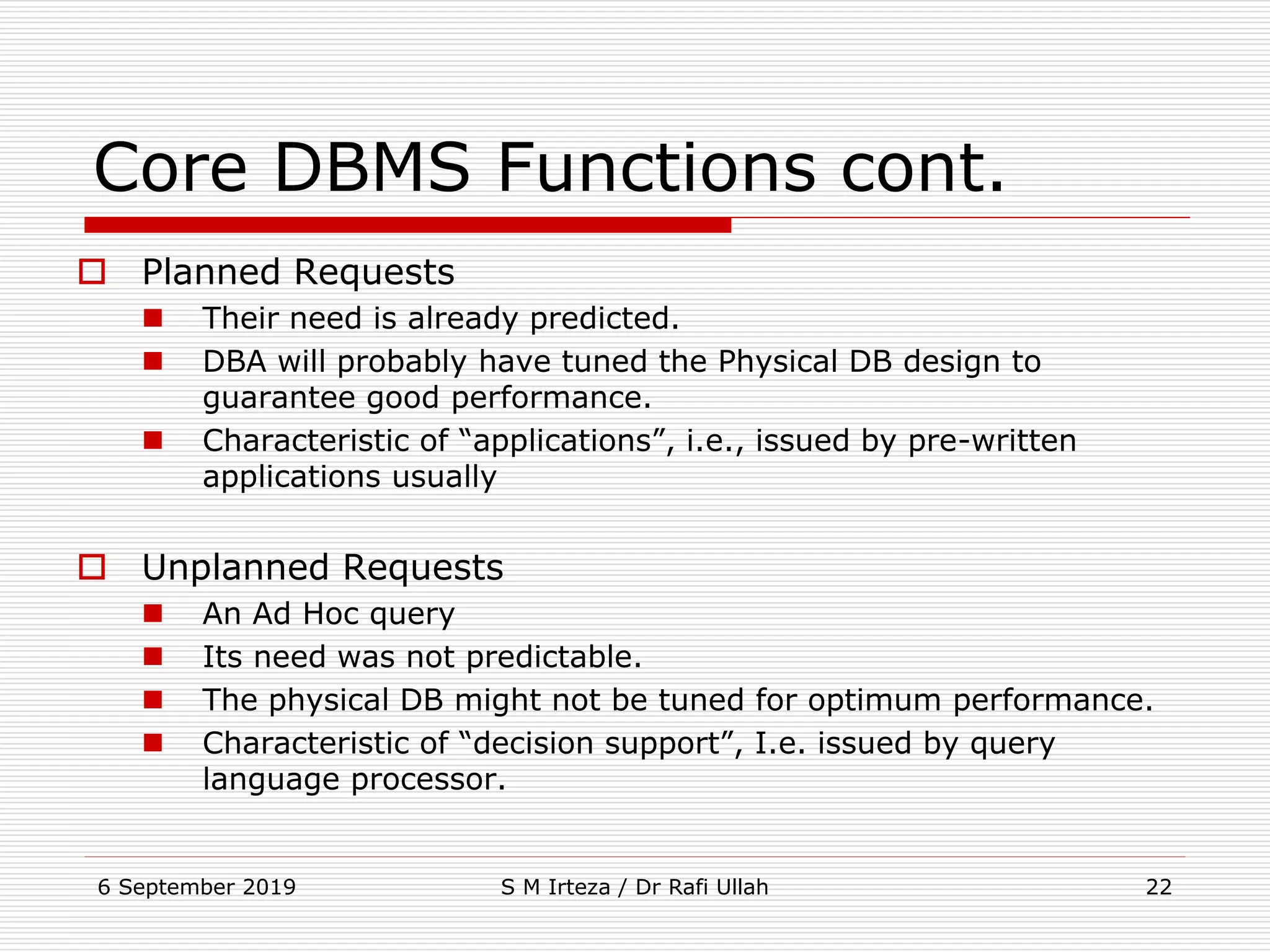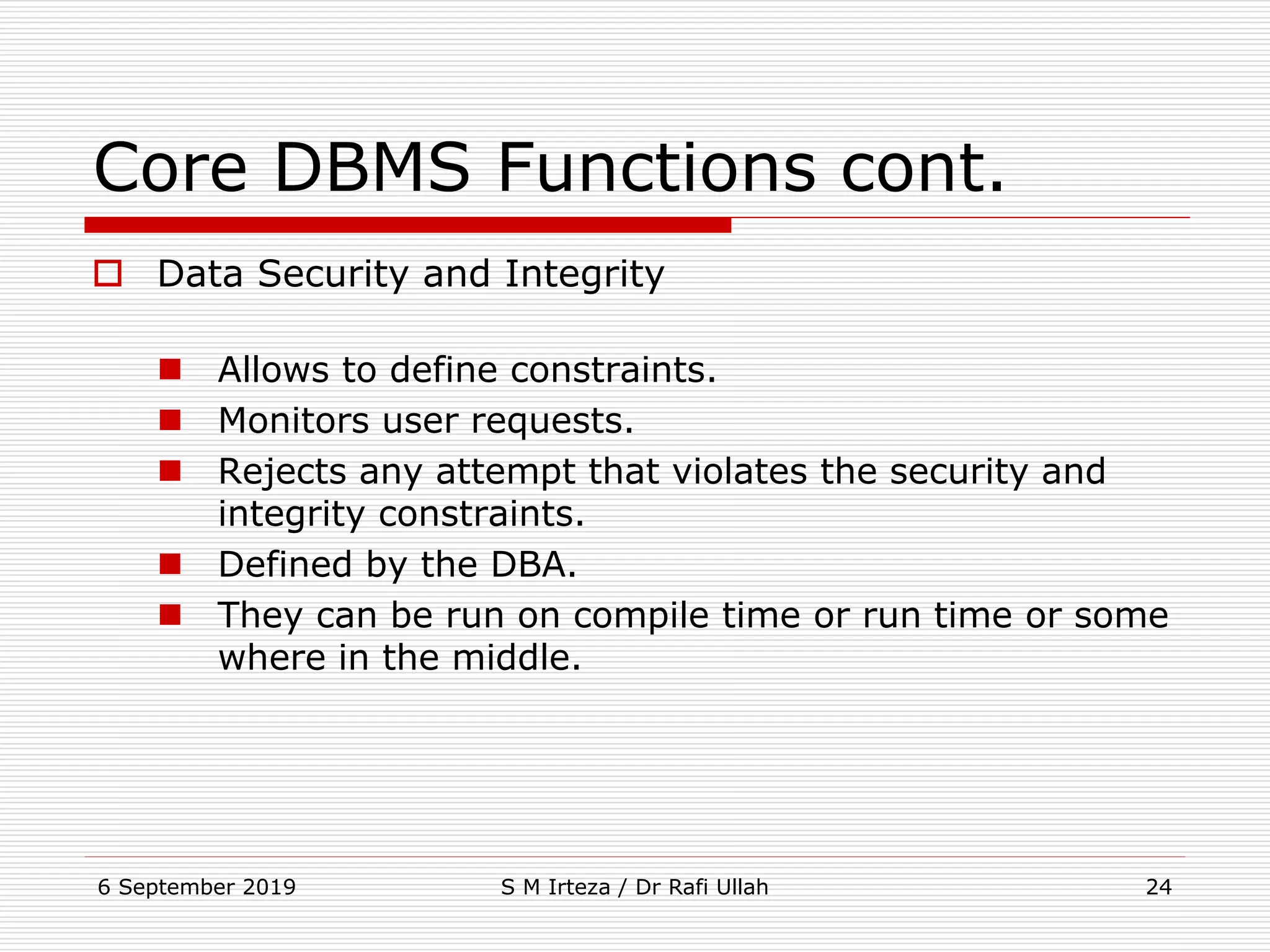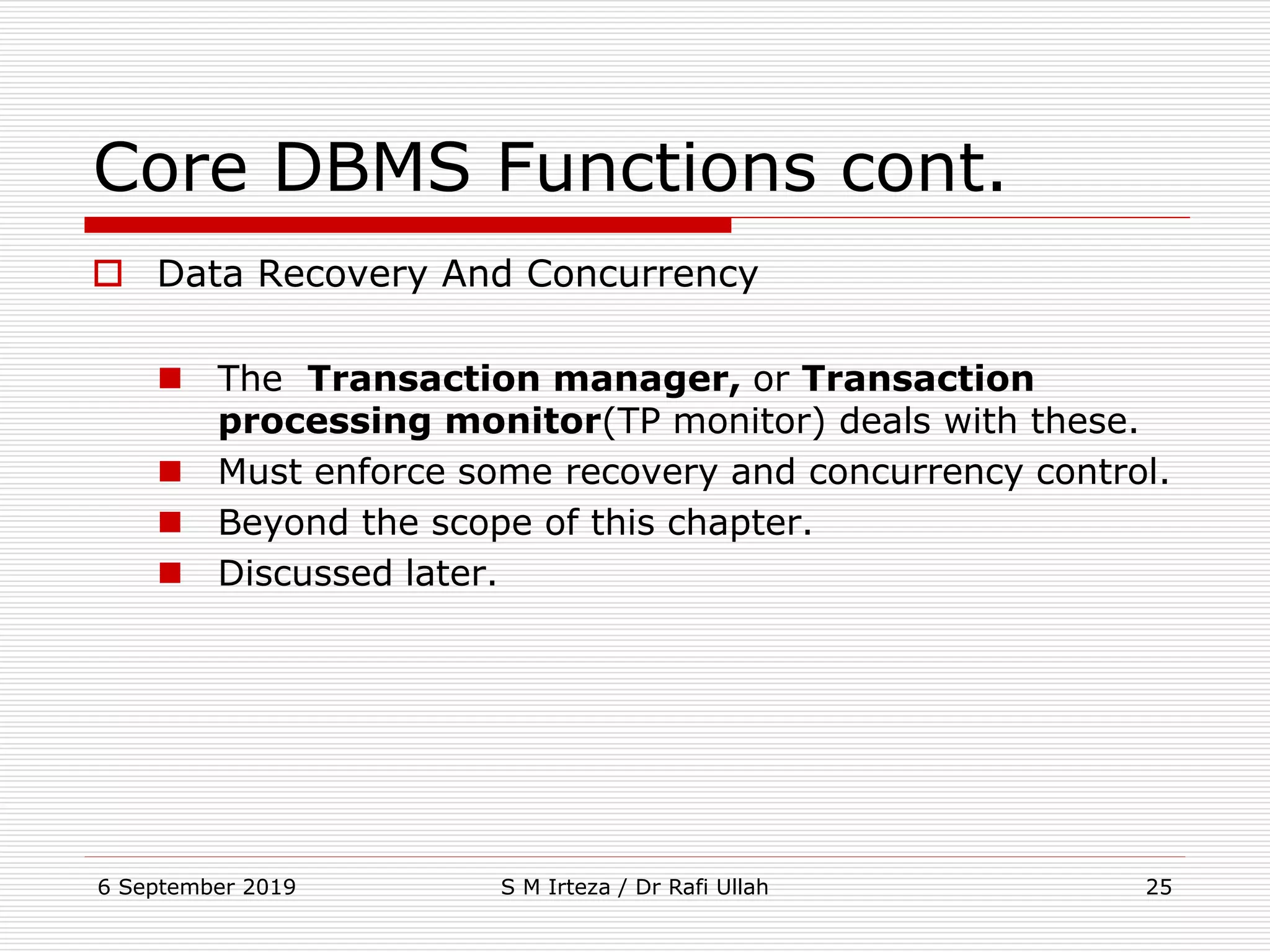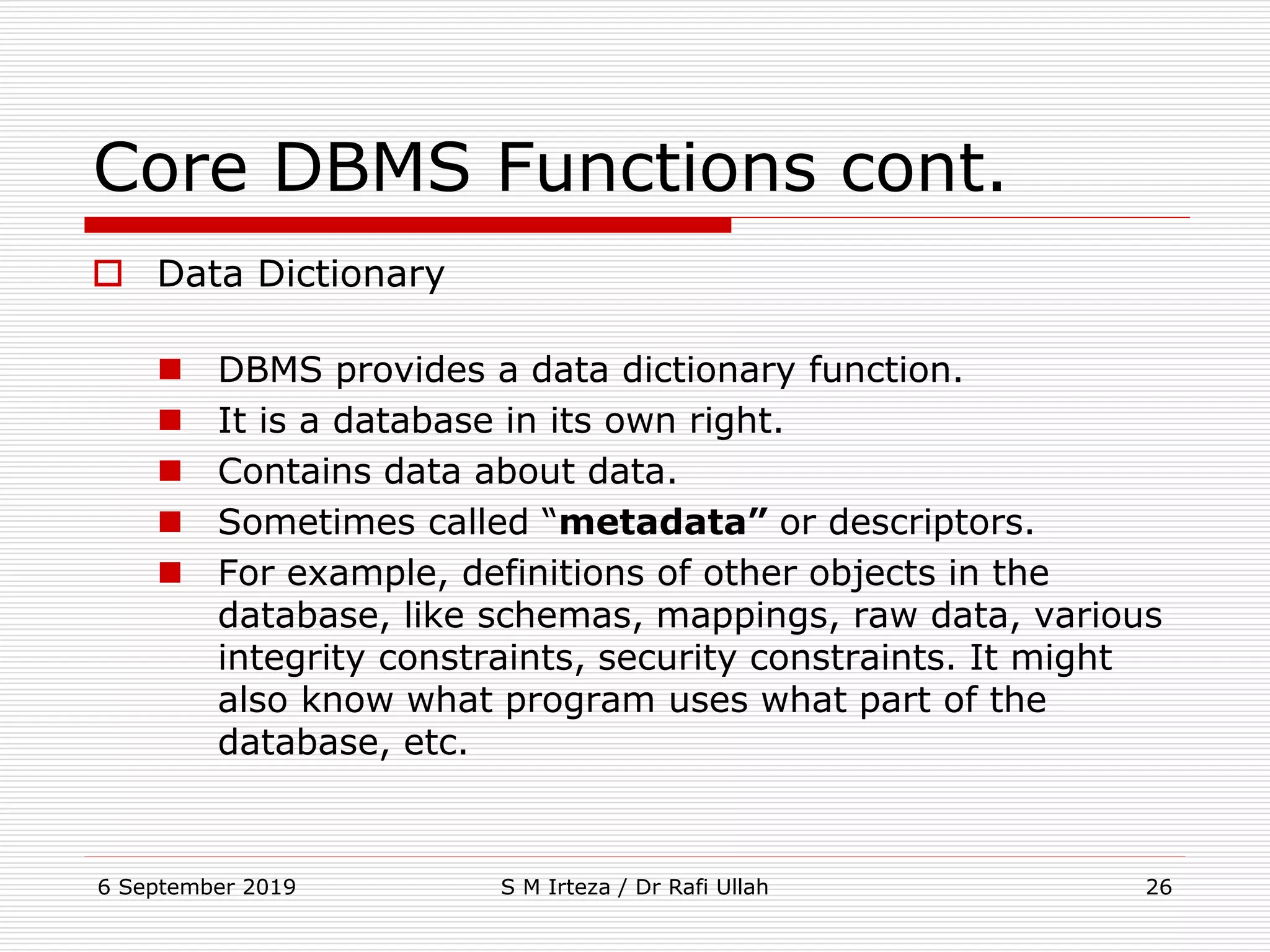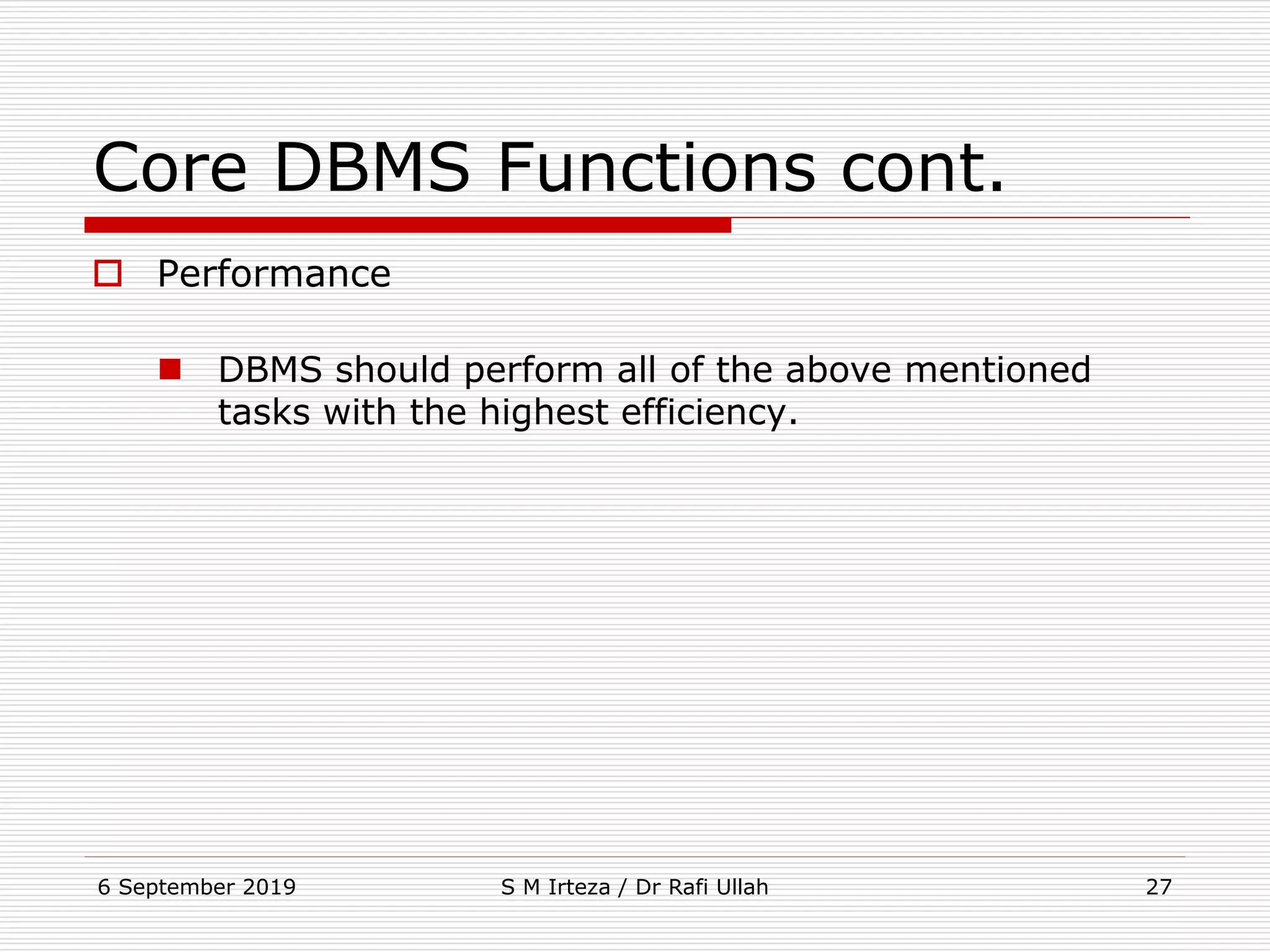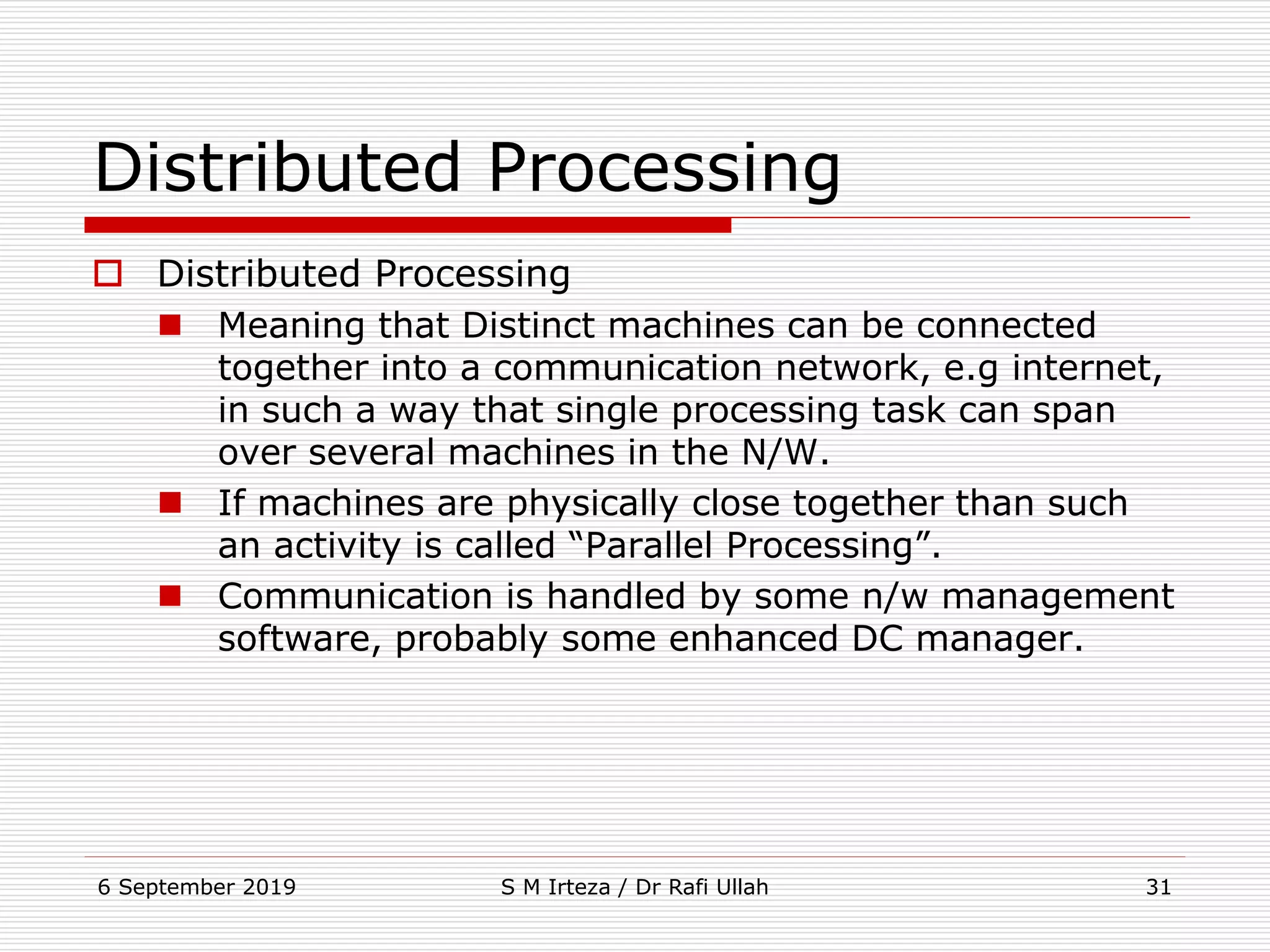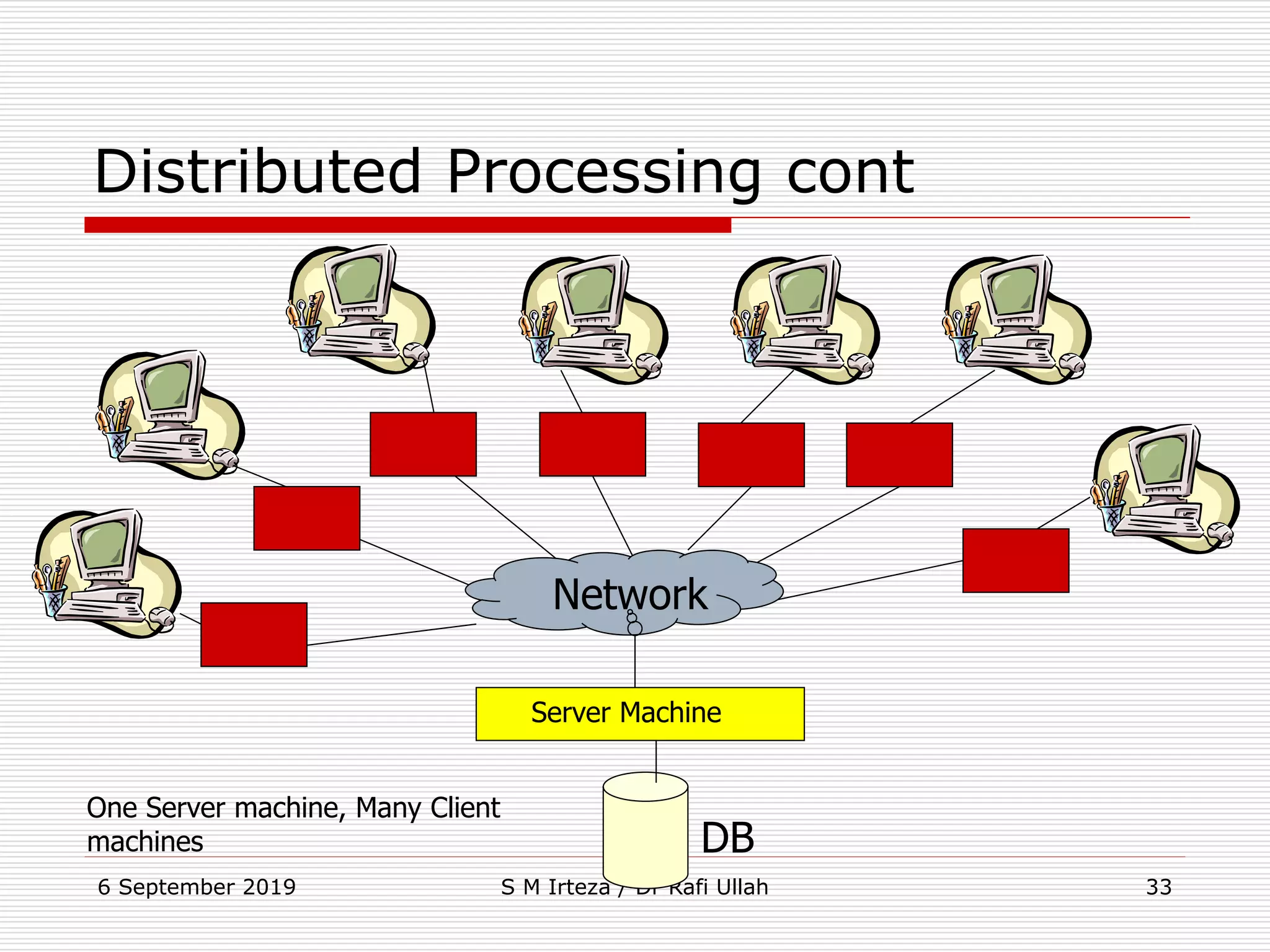The document discusses the three-level architecture of database systems: the physical level, logical level, and view level. It describes each level in detail. The physical level refers to how data is stored internally. The logical level represents the conceptual design of the entire database. The view level consists of external schemas that individual users see. The document also covers the responsibilities of the database administrator (DBA) in managing the schemas and mappings between levels to map user views to the underlying conceptual and physical designs.








